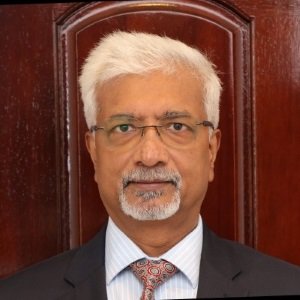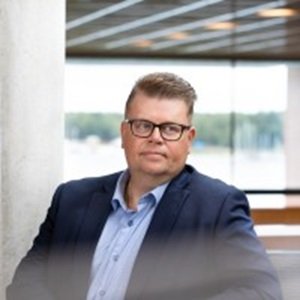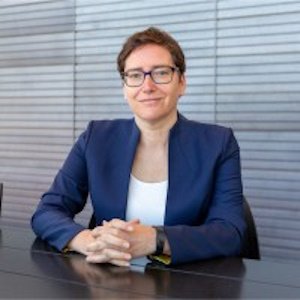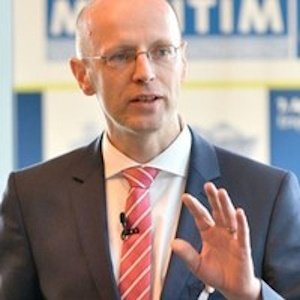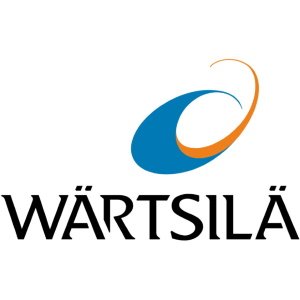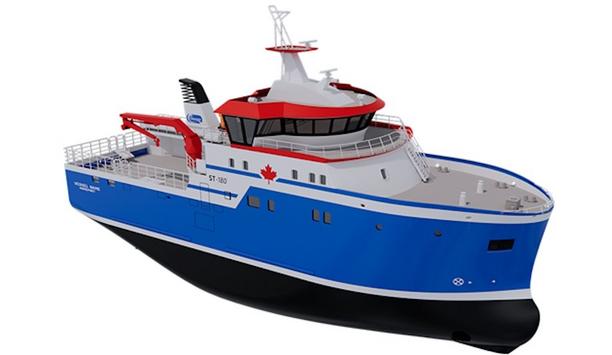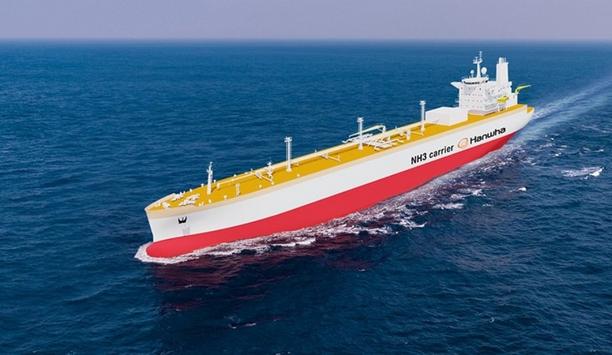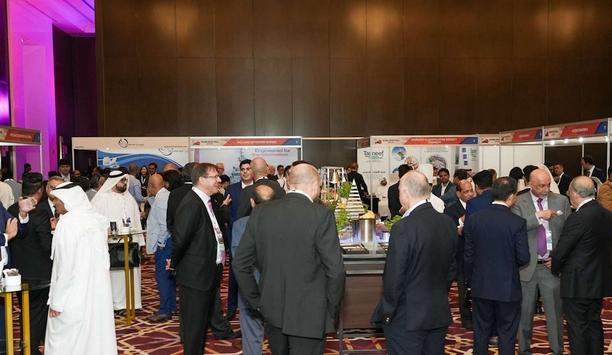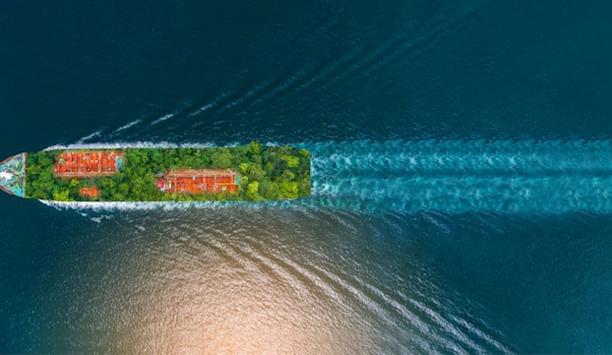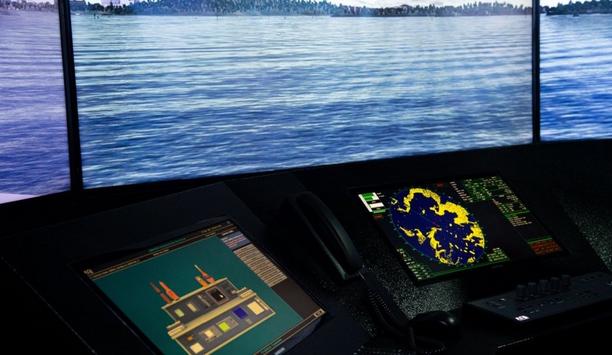Wärtsilä Corporation - Experts & Thought Leaders
Latest Wärtsilä Corporation news & announcements
Technology group Wärtsilä will supply its Wärtsilä 20 main engine and selective catalytic reduction (SCR) system for a new 40.9-metre long state-of-the-art fishing vessel, specifically designed for lobster fishing. The vessel, which will operate in North Atlantic waters, has been ordered by Canadian operator Clearwater Seafoods and will be built at the Hvide Sande Shipyard in Denmark. The order was booked by Wärtsilä in Q2 2025. Services for the fishing sector The operational profile of fishing vessels can vary significantly, depending on factors The operational profile of fishing vessels can vary significantly, depending on factors such as geographical location, fishing method and environmental conditions. As such, it was, Wärtsilä’s extensive experience - both globally and at a local level - in supplying solutions and services for the fishing sector that was cited as being a major factor in the award of this contract. Future designs for the fishing industry “We have worked closely with Wärtsilä before and trust their local service, equipment reliability, and respect their expertise. Understanding our needs is crucial for any supplier, and Wärtsilä has consistently demonstrated this,” says Tony Jabbour, VP Global Supply Chain, Clearwater Seafoods. “This is a specially designed vessel that could well influence future designs for the fishing industry. Efficiency has been the priority not only for the design, but also for all the onboard equipment. The Wärtsilä engine and SCR system will clearly deliver the required propulsion efficiency,” adds David Birkwald Thorstensen, Head of Sales at Hvide Sande Shipyard. Overall performance of the engine The vessel has been designed to excel in demanding North Atlantic conditions With a strong focus on efficiency, safety, and sustainability, the vessel has been designed to excel in demanding North Atlantic conditions. The Wärtsilä 20 is a well-proven compact, lightweight marine engine, offering fuel flexibility and reliable performance in genset and main engine applications. The overall performance of the engine and exhaust aftertreatment will be optimised further with the SCR – improving emissions reduction, noise abatement, and engine efficiency. Services for the fishing sector “Delivering an optimal and highly reliable solution for a fishing vessel requires a deep understanding of its various operational modes. Wärtsilä has an extensive track record in supplying solutions and services for the fishing sector, and we are delighted to be supporting Clearwater Seafoods and Hvide Sande with their goal of ensuring that the vessel operates safely, reliably, efficiently and sustainably,” comments Stefan Nysjö, Vice President of Power Supply, Wärtsilä Marine. The Wärtsilä equipment is scheduled for delivery during the first quarter of 2026.
Wärtsilä Gas Solutions, part of technology group Wärtsilä, will supply the cargo handling systems for two very large Ammonia Carrier (VLAC) vessels being built at the Hanwha Ocean shipyard in Korea. The 88,000 m3 capacity vessels have been ordered by a Japanese ship owner. This latest order, which was booked by Wärtsilä in Q2 2025, further strengthens the company’s established position as a supplier of cargo handling systems. “We have good experience with Wärtsilä’s cargo handling systems. Their support and quick reaction to our needs have always been much appreciated, and their systems are perfectly designed for these two VLACs,” says Mr. Lee, Leader of Basic Design Team, Hanwha Ocean Co. Continuous successful strategy implementation VLACs are essentially Very Large Gas Carriers but are designed to carry full cargoes of ammonia. Since ammonia has a high specific gravity, VLAC cargo tanks and hulls need to be reinforced, and the vessels will have a deeper draught when fully loaded. "Enabling decarbonised shipping operations is at the core of our strategy. This contract is an additional proof point for continuous successful strategy implementation, while reinforcing our strong partnership with Hanwha," comments Patrick Ha, Sales Manager, Wärtsilä Gas Solutions. The Wärtsilä equipment is scheduled for delivery to the yard commencing in Q4 2025.
The regional offshore industry is gearing up for one of its most anticipated events of the year: the 3rd Offshore Support Vessels (OSV) Conference, taking place on 20–21 May 2025 at the iconic Rixos Marina Abu Dhabi. The event will serve as a crucial platform for strategic dialogue, commercial engagement, and technological exchange across the offshore marine logistics and energy sectors. Organised under the theme “Charting New Frontiers in Offshore Innovation and Excellence,” the 2025 edition builds on the momentum of its previous iterations, bringing together senior decision-makers, technical experts, and commercial stakeholders from across the MENA region and beyond. Insightful sessions on various subjects As offshore exploration and development gain traction amidst global energy transitions, the conference aims to spotlight innovation, operational resilience, and sustainable growth in offshore support services. Attendees can look forward to insightful sessions exploring: Regional fleet modernization and shipbuilding growth Digitalization, AI, and automation in OSV operations The energy mix: decarbonisation, electrification, and hybrid propulsion Human capital development and safety excellence Regulatory updates and classification developments The speaker lineup includes high-level representatives from ADNOC Logistics & Services, Saudi Aramco, Zamil Offshore, Bourbon, International Maritime Industries, ABS, and Wärtsilä, among others. The program is curated to deliver a comprehensive overview of market trends, investment priorities, and innovation pathways. Exhibition zone to showcase offshore solutions In addition to the strategic conference sessions, a boutique exhibition zone will showcase the latest offshore solutions, vessel technologies, and operational services. Attendees will also benefit from facilitated networking, one-on-one business matchmaking, and industry roundtables. With over 400 industry professionals expected to attend, the 3rd Offshore Support Vessels Conference is poised to help chart the course for the next phase of offshore and maritime development in the region.
Insights & Opinions from thought leaders at Wärtsilä Corporation
The shipping industry is currently navigating a profound transformation driven by environmental concerns, new emissions targets, and evolving regulations. As vessel owners and operators seek to reduce emissions while remaining competitive, determining the right strategy has become increasingly complex. Factors such as alternative fuel availability, fluctuating prices, and an ever-expanding range of technological solutions have made decision-making anything but straightforward. Lack of motivation Regulations evolve, technologies persist to advance, and can differ greatly from port to port The complexity arises from the many moving parts of the industry. Regulations evolve, technologies continue to advance, and infrastructure can differ greatly from port to port. For vessel owners committed to reducing their environmental impact, the challenge isn’t a lack of motivation, it’s finding the most effective way to navigate the myriad of options available. Hybrid propulsion systems One method gaining traction is data-driven decision-making through digital modelling. Rather than making decisions based on guesswork, digital modelling allows owners and operators to create a detailed representation of a vessel and simulate the performance of different strategies or technologies over its lifetime. That way, they can ‘test’ these approaches before committing large investments—particularly useful when considering new fuels or hybrid propulsion systems that are still maturing. Decarbonisation Modelling Service Digital modelling accounts for variables such as vessel speed, power needs, and route patterns Digital modelling accounts for variables such as vessel speed, power needs, and route patterns, applying machine-learning algorithms to find the most promising design or retrofit. It can also show how ideas might evolve if regulations tighten, or new fuels become more practical. At Wärtsilä, our Decarbonisation Modelling Service is designed to guide shipowners and operators through this maze of choices. In developing this tool, we have observed that shipowners required more than an “off-the-shelf” solution. They needed insights based on their own operational data, combined with practical knowledge of costs and likely regulatory trends. Benefits of digital modelling One of the main benefits of digital modelling is its flexibility. Depending on an owner’s goals, whether that’s meeting today’s regulations or planning for future mandates, they can explore multiple options. A fleet operator might compare installing hybrid batteries versus retrofitting for LNG or consider alternative fuels such as ammonia and methanol, or carbon capture. These simulations can factor in fuel prices, available bunkering infrastructure, and even unexpected events like global supply chain disruptions or future carbon taxes. Ship’s actual operational profile At Wärtsilä we often liken digital modelling as the closest thing to a crystal ball At Wärtsilä we often liken digital modelling as the closest thing to a crystal ball. While it isn’t perfect, it significantly improves our ability to make informed decisions and maintain flexibility as market conditions or regulatory landscapes shift. Consider, for instance, a mid-sized container ship operating in Asia. The owner, eager to lower CO2 emissions, might be unsure whether to retrofit for LNG immediately or wait for ammonia infrastructure to mature. Using a digital model based on the ship’s actual operational profile, we can test both scenarios—evaluating fuel price trends, port facilities, and the vessel’s remaining service life. Adopt an interim strategy If the model indicates that an LNG retrofit offers a promising return on investment along with moderate emissions cuts, the decision becomes clearer. Alternatively, if the potential for ammonia becomes evident sooner, it might be wiser to adopt an interim strategy or consider dual-fuel engines. It’s important to recognise that decarbonisation is not merely a box-ticking exercise to meet current regulations; it is a dynamic, ongoing process. With tightening rules from bodies like the International Maritime Organization (IMO) and the EU on carbon intensity, and with cargo owners increasingly demanding transparency, the need for adaptive, data-driven solutions is more critical than ever. LNG with battery storage Others might make quick retrofits to comply with rules and plan for bigger upgrades later Another strength of data-driven decarbonisation is that it is not a one-off activity. As a vessel operates, new information becomes available. Owners can update their models to reflect these shifts, allowing for continuous refinement. This matters because what is optimal now may only be a temporary measure. Some operators use LNG with battery storage for a few years, then switch to next-generation fuels as they become viable. Others might make quick retrofits to comply with regulations and plan for bigger upgrades later. Raw data into actionable insights There is also a perception that gathering and interpreting data is too complex or costly. However, many modern vessels are already equipped with the necessary sensors and tracking systems, and analytics software has become more accessible. The real value lies in transforming raw data into actionable insights. Digital models not only help in planning for evolving market conditions but also enable us to visualise and execute long-term strategies. Portion of global CO2 emissions The real test is balancing environmental aims with retail realities and regulatory forces Shipping contributes a notable portion of global CO2 emissions, giving the industry strong financial and ethical reasons to embrace cleaner operations. The real test is balancing environmental aims with commercial realities and regulatory pressures. With mounting pressure from regulators, customers, and investors, now is an opportune time to adopt data-driven approaches. A continuously updated model provides a practical way to keep up with changes in the market and policy landscape. By integrating operational data, anticipating possible scenarios, and remaining open to new solutions, the maritime industry can cut emissions without sacrificing competitiveness. Shipowners and operators Shipping is an industry that operates on tight margins and these tools must deliver financial stability as well as ongoing compliance. Digital modelling is not just another technical tool; it’s a forward-looking process that helps shipowners and operators steer a confident course in uncertain waters. As more companies experiment with alternative fuels, hybrid propulsion, and emerging technologies, having a robust method for evaluating these options is absolutely essential.
More than almost any trend, decarbonisation is driving the future of maritime. That reality alone makes decarbonisation the perfect topic for our first-ever Expert Panel Roundtable column. Traditional maritime fuels, like heavy fuel oil, release harmful pollutants that contribute to air pollution and have adverse health effects. We have to do better, and discussions in the maritime industry centre on which combination of alternative fuels and other technologies can solve the shorter- and longer-term challenges of decarbonisation. For an update on the various approaches, we asked our Expert Panel Roundtable: What are the latest maritime technology trends in decarbonisation?
Wärtsilä WST-11 Steerable Thruster
Wärtsilä WST-14 Steerable Thruster
Wärtsilä WST-16 Steerable Thruster


